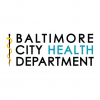Baltimore City Officials Release Standards for Treating Overdose and Opioid Use in Hospital Settings
Tuesday Jul 10th, 2018
FOR IMMEDIATE RELEASE
BALTIMORE (July 5, 2018) - Today, the Baltimore City Health Department released the finalized standards of the Levels of Care for Baltimore City Hospitals Responding to the Opioid Epidemic.
Developed with ongoing, active input from hospitals and community members, the Levels of Care established a three-level structure that assesses a hospital’s capacity to prevent and treat overdose and opioid use. The initiative builds on progress already made by Baltimore’s hospitals to expand addiction treatment.
The Levels of Care are scored on numerous evidence-based criteria, such as hospitals’ ability to provide treatment to any patient—in the emergency department or elsewhere—who screens positive for addiction; distribute naloxone to patients at risk of overdose; connect patients with peers who are themselves in recovery from addiction;, and ensure that physicians are prescribing opioids judiciously. A hospital can be level 3, 2, or 1, with a level 1 hospital offering the most comprehensive approach.
“Among Baltimore's greatest assets is our unparalleled hospital system which, arguably, is the finest in the world," said Mayor Catherine E. Pugh. "I have called on the leaders of our hospitals to join us in fighting the opioid crisis. With their expertise and combined efforts in this fight, we can make a difference in the lives of those afflicted. I am grateful to our medical partners for heeding this call to action.”
On April 30, Mayor Pugh and Dr. Wen joined the leaders of Baltimore City’s 11 acute-care hospitals to launch the Levels of Care initiative. The Health Department solicited public comment on the proposed standards through May. The standards were then revised in collaboration with Baltimore’s hospitals, the Maryland Hospital Association, community-based providers, and other experts.
“Hospitals play a central role in responding to the opioid epidemic,” said Dr. Leana Wen. “Addiction is a disease. Treatment exists. Together, under Mayor Pugh’s leadership, we will build upon the work that’s already been done and make Baltimore City a national model for treating addiction alongside every other disease. That means treating addiction in our traditional health care institutions, including hospitals.”
Hospitals will be certified based on documentation submitted by hospitals and evaluated by by the Baltimore City Health Department. The first certifications will be released to the public by December 2018.
A Level 3 hospital:
Levels of Care for Baltimore City Hospitals Responding to the Opioid Epidemic
1) Screens emergency department (ED) patients for at-risk substance use and substance use disorder (SUD)
2) Has an ED discharge protocol (as required by state law) that includes a referral to community-based treatment for patients with SUD
3) Prescribes naloxone to ED patients at high risk for opioid overdose
4) Maintains capacity to initiate medication-assisted treatment for ED patients with opioid use disorder (OUD)
5) Promulgates guidelines for judicious prescribing of opioid analgesics across the hospital system
6) Provides information about safe storage and disposal to patients who are prescribed opioids
A Level 2 hospital meets the criteria of Level 3 and:
7) Offers peer recovery specialist services or similar support services to ED patients
8) Screens directly admitted patients for at-risk substance use and SUD
9) Prescribes naloxone to admitted patients at high risk for opioid overdose
10) Maintains capacity to initiate medication-assisted treatment for admitted patients with OUD
11) Monitors fidelity to prescribing guidelines and addresses cases of injudicious prescribing
A Level 1 hospital meets the criteria of Levels 3 and 2 and:
12) Maintains capacity to initiate medication-assisted treatment for admitted patients with OUD with at least one formulation of each medication approved by the U.S. Food and Drug Administration for that purpose
13) Offers peer recovery support services or similar support services to admitted patients
14) Dispenses naloxone to ED patients and admitted patients at high risk for opioid overdose
15) Screens patients in hospital campus outpatient clinics for at-risk substance use and substance use disorder (SUD)
16) Offers ongoing medication-assisted treatment in appropriate hospital campus outpatient clinics, including clinics that do not specialize in the treatment of substance use disorder
